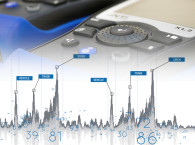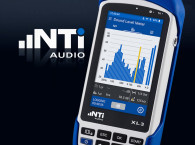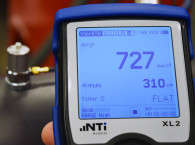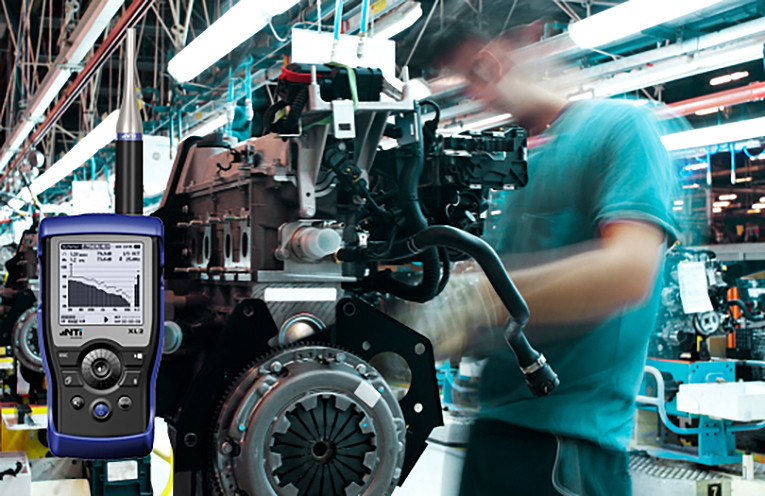
The XL2 is a fully-featured logging Sound Level Meter, and users can get more out of the XL2 with the latest Data Explorer Software from NTi Audio, together with the Sound Power Testing, a professional solution with the XL2. This new solution allows determining sound power from sound level measurements, and allows a manufacturer to determine the sound power level LWA of a product, using ISO 3744 standards, and international safety directives.
Noise Measurements
The spectrum provides important additional information, which cannot be inferred from the broadband levels alone; is it a high-pitched noise or a low-frequency hum? Does the spectrum correlate with rotating parts in a machine? Does a particular frequency band consistently stick out of the spectrum as a tonal sound? This analysis is also critical when applied, for example, to traffic, aircraft or wind turbine noise evaluation.
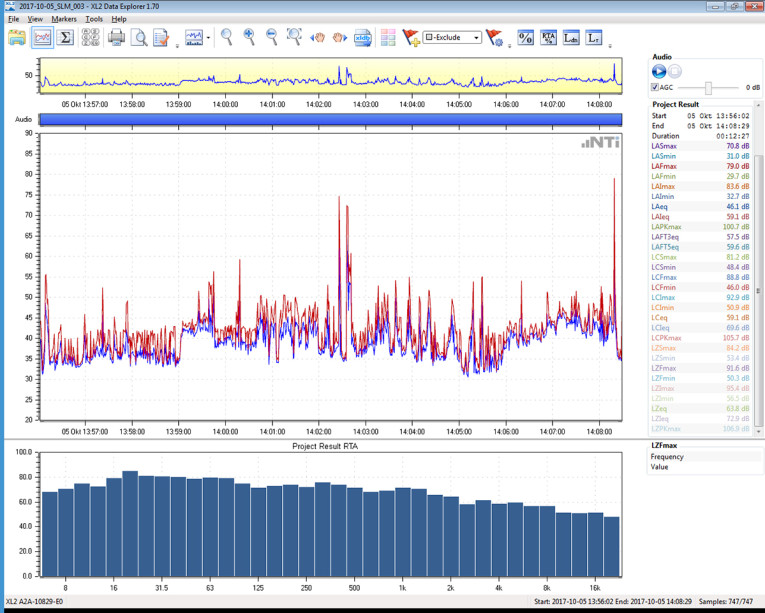
A fluctuating noise can be perceived as being more annoying than a steady noise. To catch such sporadic noise in a measurement the XL2 logs the minimum and maximum level (Lmin, Lmax) as well as the mean value (Leq) for every frequency band in the spectrum. Comparing Lmax, Lmin, and Leq is an easy way to see how the sound varies. Thus, for example, reliable data is available on the spectral dynamics of a musical performance, or whether a particular machine emits a steady or fluctuating noise.
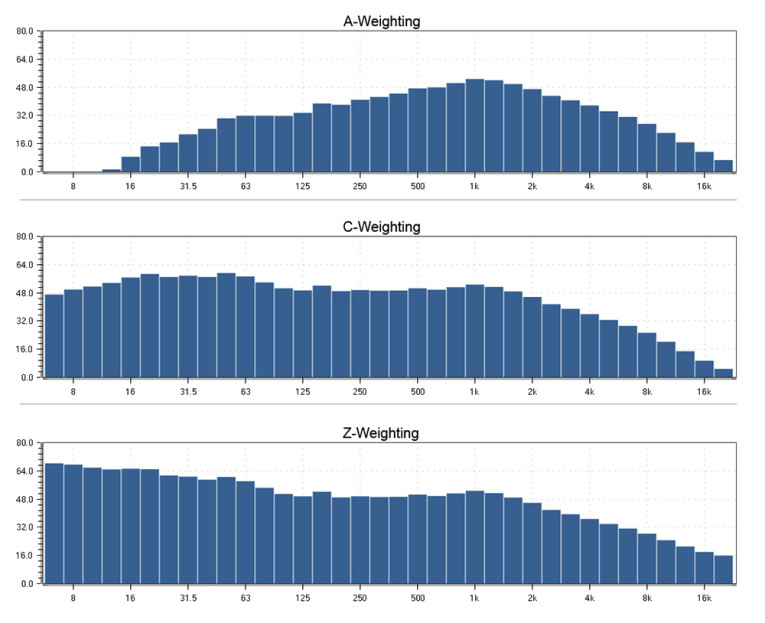
To measure the max, min and mean spectral values, the XL2 Sound Level Meter requires the optional Extended Acoustic Pack and firmware V3.32 or higher. Data import from the XL2 into the Data Explorer software is only possible with the Data Explorer Option installed on the XL2 or with the annual subscription service Data Explorer 365. The Data Explorer software itself can be installed on any number of PCs. The software is freely available for all users to download. The extensive data analysis is supported with Data Explorer version 1.70. The XL2 firmware V3.32 and the Data Explorer V1.70 are available to any registered user for free download.
Sound Power Testing
NTi Audio also offers a new solution for determining sound power from sound level measurements. This allows a manufacturer to determine the sound power level LWA of a product, using ISO 3744 standards, according to the Machinery Directive 2006/42/EC and the Outdoor Noise Directive 2000/14/EC. The measurement data is recorded using the portable XL2 Sound Level Meter, while the evaluation and creation of the measurement report are carried out with the new 'Sound Power Reporter' PC Software.

The sound power level LWA characterizes the sound emissions of a machine and is independent of the acoustic properties of the surroundings and of the distance to the measuring point. In contrast, the sound pressure level Lp describes the sound pressure at a particular measuring point. The difference between sound power and sound pressure can be explained by likening them to the power output versus temperature of an electric heater: the power of a heater is given in kW. This is a description of the source, is a constant quantity and can thus be likened to sound power. On the other hand, the temperature at a particular position in the room is dependent on the distance from the heater as well as characteristics of the room such as the initial temperature of the room, the volume of the room, the insulating properties of the walls, and many other characteristics. Temperature thus corresponds to sound pressure in this analogy.
With the handheld, portable XL2 Sound Level Meter, the sound emissions of a machine (e.g. a lawn mower or leaf blower,) can be determined quickly and precisely. Sound power for such products must be specified in accordance with the Outdoor Directive 2000/14/EC. Measurements are taken from at least nine positions on an imaginary envelope surface, which encloses the object under test. The XL2 records the noise spectrum either in octave or third-octave band resolution. Background noise and the reverberation time for the standard-compliant correction calculations are also measured with the XL2.
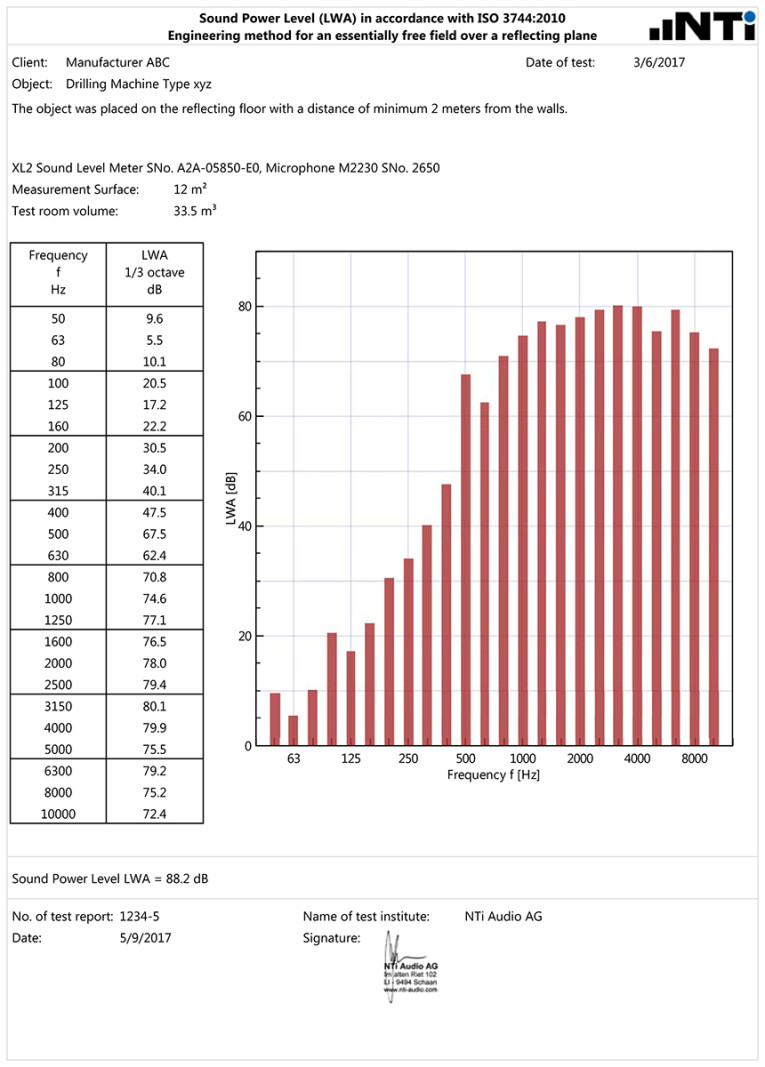
The Sound Power Reporter PC software completes the essential tools needed for sound power measurements by evaluating and reporting on the measured data recorded with the XL2. This includes all the necessary corrections (background noise and room correction) as well as the creation of an extensive measurement report according to the ISO 3744 standard, including a description of the measuring environment and the object under test. The measurement report is available within seconds of taking the measurement data from the XL2 Sound Level Meter.
With the optional 'Extended Acoustic Pack', the reverberation measurement can also be carried out in third-octave resolution. The software is freely available for all users to download. The import of data into the PC software is enabled by the Sound Power Option being installed on the XL2 Sound Level Meter. As an alternative to purchasing this option, the annual subscription service "Sound Power Reporter 365" offers an inexpensive way for the data import into the PC software. This allows the processing of the measurement data from a licensed XL2 at several workstations as well as the transfer of the data within a team or to a client.
www.nti-audio.com



